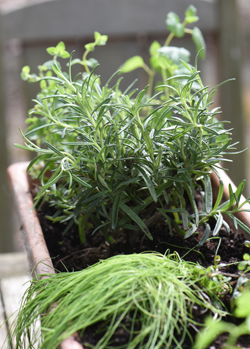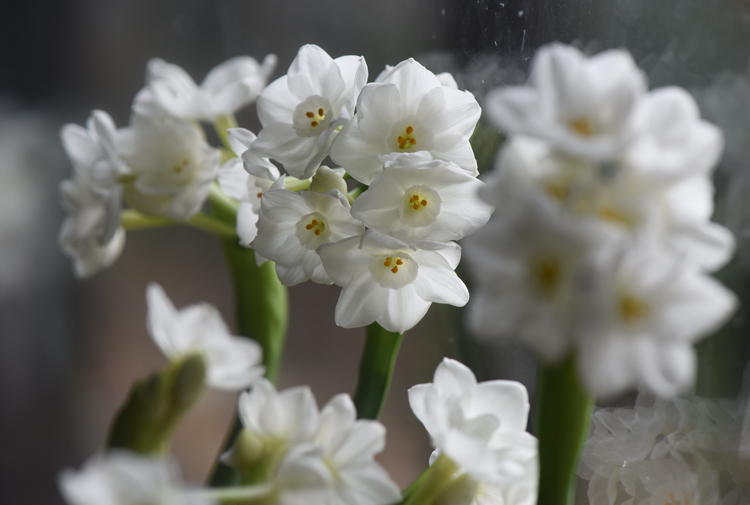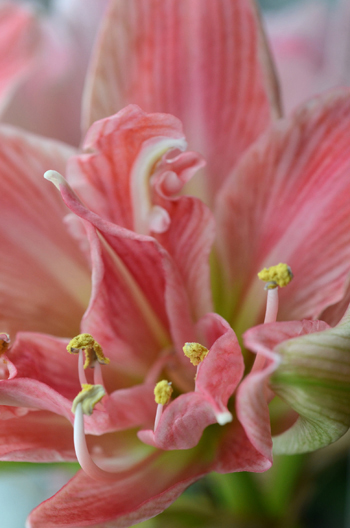Winter Garden Checklist
Posted on: January 4, 2018 | Written By: Doug Oster |
A brutal start to winter like this one is especially tough for gardeners. Time away from the garden provides a nice respite at first, but only for a short time. Then the urge to start gardening kicks in. As the offseason progresses, the longing to dig in the dirt intensifies. This winter checklist is filled with things to do until the weather breaks.
WINTER CHECKLIST
-

This planter is filled with herbs that will grow inside on a windowsill in the winter and then go outside for the summer. This one is planted with rosemary, chives, oregano and other herbs.
One of the ways to keep busy and get a jump on the season is to mulch perennials, trees and shrubs during a thaw. When the ground is still frozen, the wheelbarrow glides easily across the soil. The advantage of mulching now is that it will prevent heaving. When the soil freezes and thaws, plants can be pushed out of the soil. When mulching trees and shrubs, be sure that the mulch does not touch the trunk. The mulch should look like a donut, not a volcano. Piling up mulch around the trunk is the worst thing for a tree or shrub.
- This is the start of pruning season — which is both an art and a science. Research plants carefully, as pruning many spring bloomers now will remove buds which in turn will remove flowers. Things like rhododendron, azalea, dogwoods, hydrangeas and others are filled with buds and should not be pruned. It’s safe to prune fruit trees and most deciduous trees. Many nurseries give free pruning classes during the winter. It’s hard to learn how to prune until you see an expert work on trees, but then it becomes clear.
- Indoor plants give gardeners something to nurture, and most of them clean the air, too. One thing that helps houseplants do their job is to make sure the leaves aren’t dirty. I love to gather them together and put them in the shower. Besides making sure the foliage can breath, it also flushes out any salts that could have built up in the soil. Most of the plants that grow on the windowsill should be kept on the dry side and not fertilized until late February when the days get longer.

Indoor bulbs like paperwhites are often grown for the holidays, but are good to grow any time of the season.
-

‘Sweet Nymph’ is one of a series of amaryllis that share the ‘Nymph’ name. They are double flowers in a variety of colors.
Even though indoor bulbs like paperwhites and amaryllis are usually holiday plants, they are also great additions to the inside garden. Amaryllis in particular can be a quick fix for the winter blues. The flowers are spectacular and can be coaxed into blooming annually. As they are added to the indoor landscape year after year, the flowers bloom at different times throughout the winter and into the spring. Seeing them in flower is a little touch of spring.
- Before sending out seed orders, take a look at the seeds left over from previous seasons. It’s easy to get carried away when cuddled up with catalogs dreaming of the planting season. I recently wrote about some of my favorites, but if you’re looking for something really different, check out the 2018 Ethnobotanical Catalog of Seeds by J.L. Hudson Seedsman (jlhudsonseeds.net). It’s filled with unique seeds that would be a fun addition to the landscape.
- If seeds have been around for a few seasons, test them to see if they are viable. Put the seeds in a moist paper towel and then into a plastic bag that can be resealed. Store the bag in a warm place and take a look in a week or so. If 50 percent or more seeds germinate, they are good for gardening. If less sprout, send them to the compost pile.
Create an herb planter for the windowsill. Thyme, oregano, mint, sage, spicy globe basil, African blue basil, chives, rosemary, cilantro and parsley will all happily grow inside. The larger Genovese type basils don’t really like to grow inside unless supplemental lighting is used. - Salt is the worst thing for plants. Instead of using it to keep sidewalks and driveways clear near plants, consider an alternative. Magnesium chloride is my favorite. When applied correctly, it’s as cheap as salt and much safer for plants and pets.
- Garlic lovers (like me) can plant some cloves in a pot indoors. When they sprout, the greens are a wonderful treat. Split up a bulb and push the separate cloves, with the pointed side up, into moist planting mix in a container with drainage. The greens can be eaten raw or used in soups or salads.
- Winter sowing is something I do every year, and it’s something I demonstrated for a recent “In the Garden” video (everybodygardens.com). Sprinkle seeds of radish, lettuce, spinach, arugula, beets, Swiss chard and other cool-loving crops on the snow over a good garden bed. The seeds will sprout when they are ready and often produce the first harvest of the year. Thinnings of all the seedlings can be used right away in salads. It’s a great way to get some fresh flavor from the garden.
Don’t let the cold weather get you down, it will be gardening season again before you know it.
Here’s a story about growing herbs on the windowsill.
Doug Oster is editor of Everybody Gardens, a website operated by 535Media, LLC. Reach him at 412-965-3278 or doster@535mediallc.com. See other stories, videos, blogs, tips and more at everybodygardens.com.